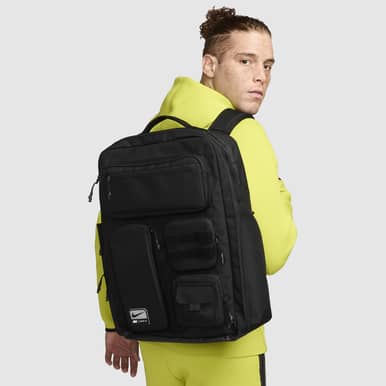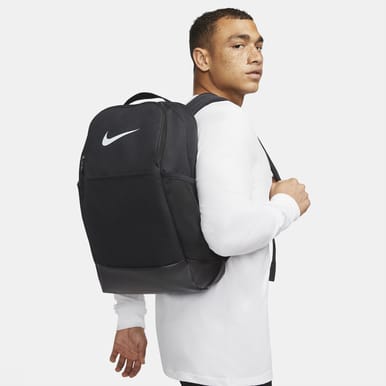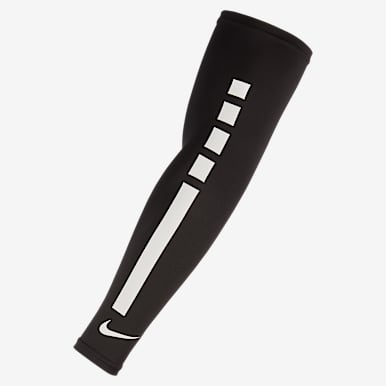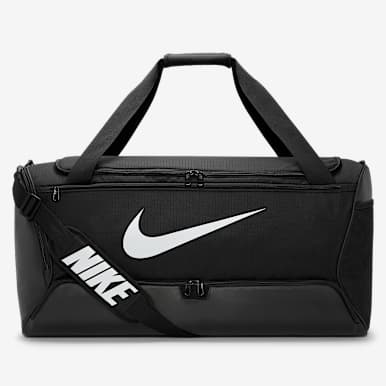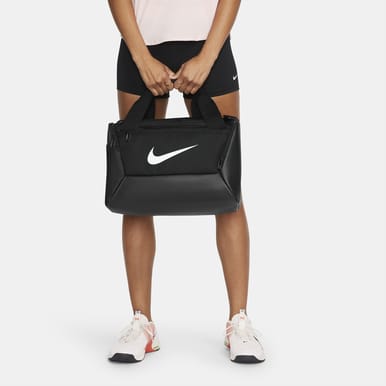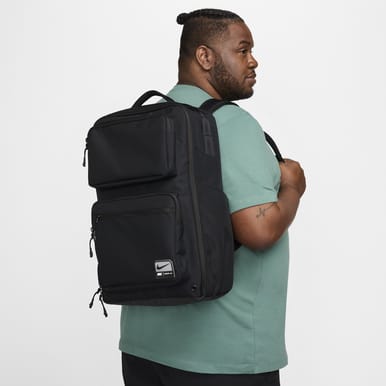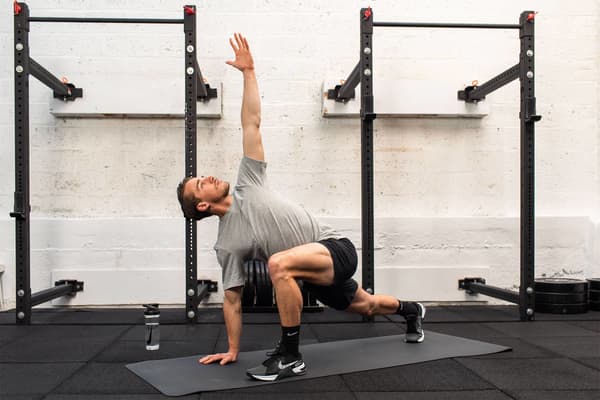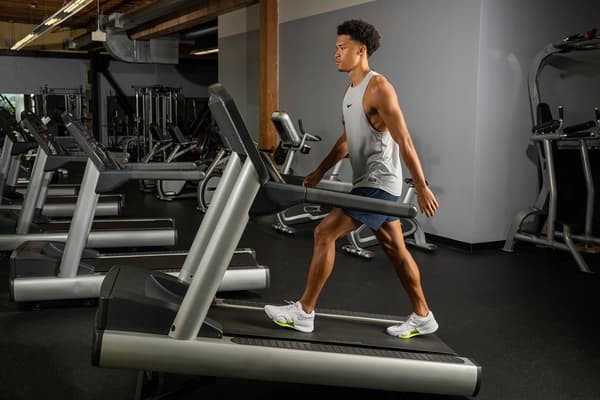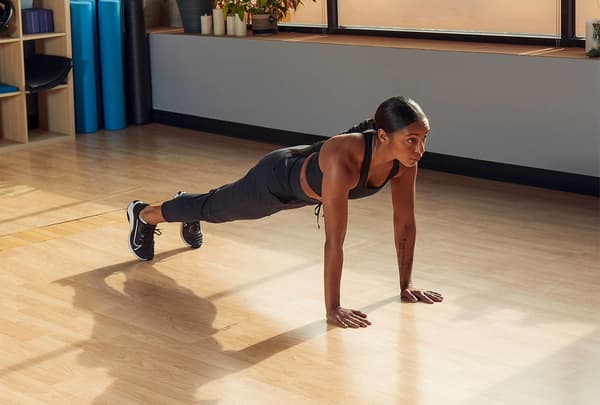Everything You Need to Know About Kettlebell Swings
Sport & Activity
This go-to move is a full-body burner.

When it comes to training efficiency, the simple-looking kettlebell can be a significant tool for building muscle and increasing endurance—this is especially true for kettlebell swings.
Research from the American Council on Exercise explored the effects participants experienced from taking two kettlebell classes per week over the course of eight weeks. Researchers not only found considerable strength gains in study subjects, but also notable increases in aerobic capacity, dynamic balance and core strength.
(Related: Can Running Give You Abs? Experts Explain)
There's a breadth of kettlebell exercises, but the kettlebell swing is one to consider for its full-body effects. All you need is one kettlebell, and the movement itself is considered a ballistic hip-hinge movement. That means the body bends in half and downwards, as opposed to a squat, where you lower the hips and keep your back straight.
Here are the steps, according to personal trainer Dan Partridge, CPT, certified by Future Fit in the UK, as a level-3 trainer.
- Stand with your feet slightly wider than shoulder-width apart, with a kettlebell on the ground between your feet. Your knees should be slightly bent, instead of having the knees locked out.
- Hinge at your hips and grip the kettlebell with both hands, palms facing down. Lift the kettlebell about a foot off the ground while keeping your hips in a hinge position.
- Swing the kettlebell back through your legs, behind you, then straighten your legs and swing the kettlebell out in front of the body to shoulder height.
- As you come up for the swing, push the hips forwards—engaging the glutes and keeping the core activated.
- The kettlebell will swing back down through your legs as you hinge at the hips.
Muscles Worked in a Kettlebell Swing
In terms of what you'll be working, it's "almost everything from the neck down", Partridge said.
"The main focus is on the glutes, hamstrings and abdominals, and secondary to those come the quads, lats, adductors and diaphragm", he said. "Perform fewer reps with heavier weight to train for power and explosivity in the hips, or perform higher reps with a lighter weight for cardiovascular and muscular endurance".
Tips for Good Form
While the kettlebell swing is excellent for activating so many muscles simultaneously, it can also boost your injury risk if your form is off. For example, it's called a swing, but that doesn't imply you should be using only momentum and seeing the kind of snapback motion you'd experience on an actual swing in a playground. Losing control during the upswing and especially letting the kettlebell drop on its own—taking your arms along for the ride—can cause serious tension in the lower back and shoulders.
To maintain better control, push your shoulder blades towards each other and down, like you're tucking them in a back pocket. This will engage your shoulders and lats.
(Related: The Top Exercises and Stretches for Hip Mobility, According to Physiotherapists)
That's why it's helpful to start by honing your hip-hinge form, according to Ellen Thompson, ACE-certified CPT. Before you pick up a kettlebell—even the lightest available—she suggests practising a hip hinge without added load, to ensure you're able to keep the core braced throughout the movement as a way to protect the spine.
Here are more tips from Partridge and Thompson for perfecting your technique:
1.Proper Form Is Key
This is a pulling exercise, so make sure you're retracting your shoulder blades and activating your lats as you sit back and down into your start position. Keep the chin tucked and the neck neutral—don't "follow" the kettlebell's trajectory with your head by looking up and down.
Keep your feet planted firmly on the ground; don't let the return of the swing pull your heels or your toes up. Make sure you don't round the lower back; keep the spine neutral by engaging the shoulder blades. Don't hold your breath; exhale as you swing up and inhale at the top and as the kettlebell starts to descend.
2.How You Grip the Kettlebell Is Also Important
Have an easy hook grip as opposed to a crush grip so you don't overgrip, which can cause stress in the wrists and forearms. When starting, stick with the traditional Russian technique of swinging up to shoulder height instead of bringing the kettlebell up overhead. You can also consider using another Russian technique of keeping elbows bent and tucked to the side, rather than having straight arms when you swing.
Don't bring the kettlebell all the way back to the ground; it should be at about knee level before starting the next swing.
3.Remember, Start Out Slow and Work Your Way Up
As with any exercise that's new for you, Thompson suggested doing fewer reps so you can feel how the swing is affecting your muscles. You should feel fired up in the posterior chain, but if you're feeling any kind of tension or pain in the lower back, take a break and then go back to working on your form. For even better injury prevention, make sure you do some dynamic warm-up moves that can get you prepped for the exercise.
4.Take Your Time Mastering the Move
The kettlebell swing can be a real full-body burner, but it can take time to perfect, Partridge said. Body awareness both during and after the movement is valuable for detecting how even small movements like letting your shoulder blades relax or swinging higher than your chest can change the exercise—and not for the better.
Once you do get the hang of it, though, he said that people tend to move up in weight quickly. One indication that you're ready to grab a heavier kettlebell is being able to perform 10 sets of 10 swings without feeling completely wiped, Partridge said. Regardless, start with the lightest weight available, especially if you're still perfecting your form.
"The safest thing to do is always start a little lighter because—trust me—there is always a heavier weight that can be used if you're feeling good", he said.
Words by Elizabeth Millard, ACE- certified CPT.
